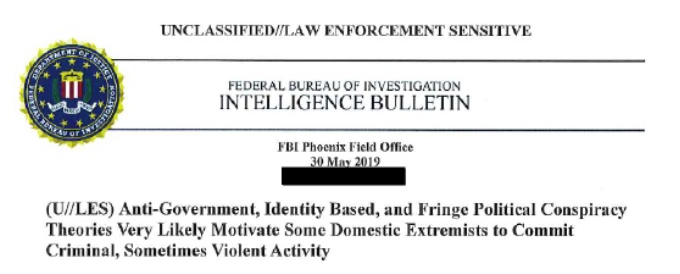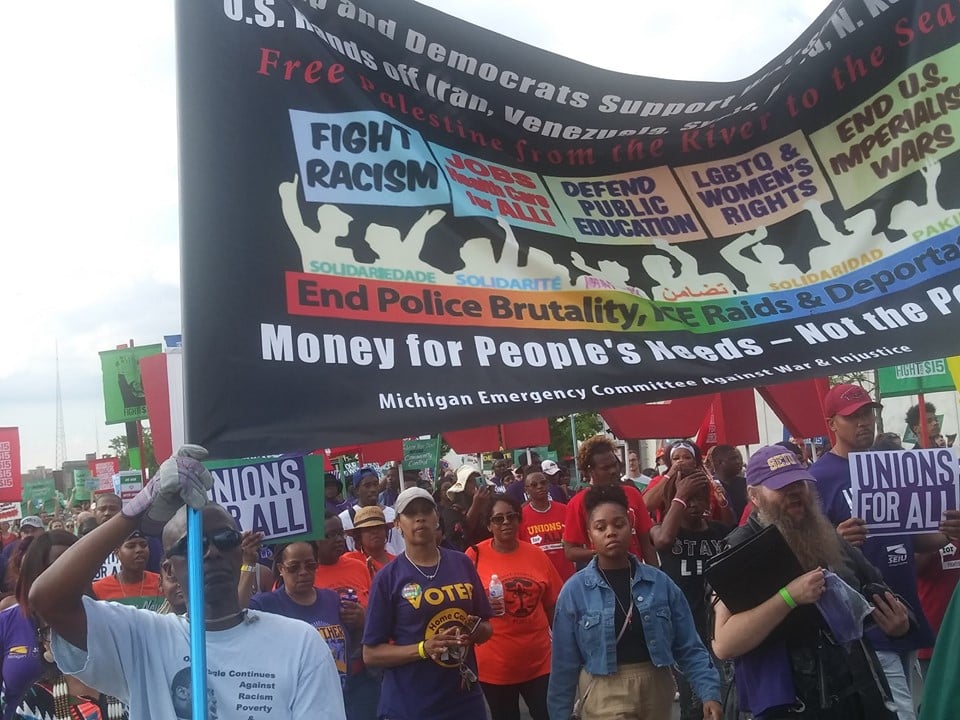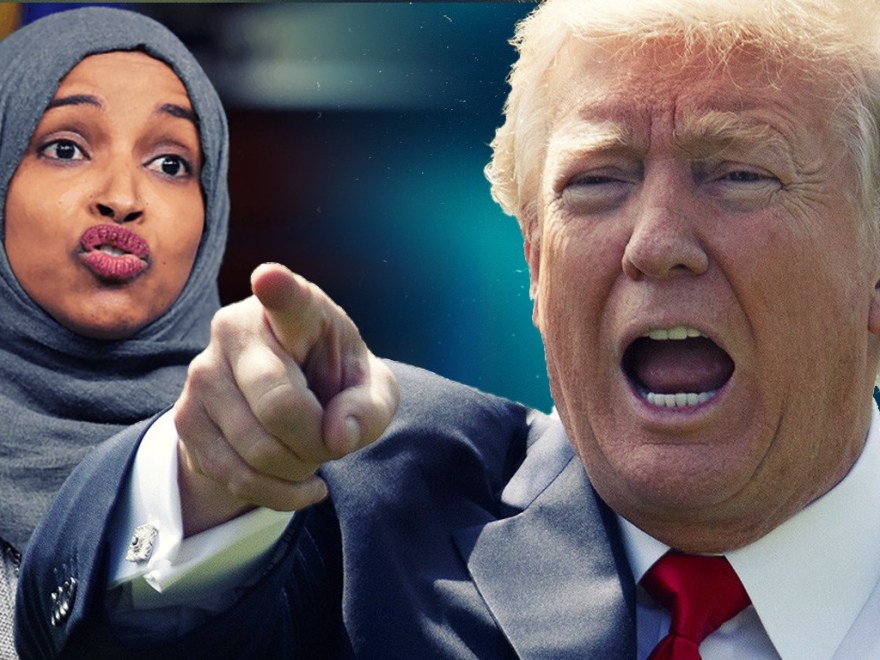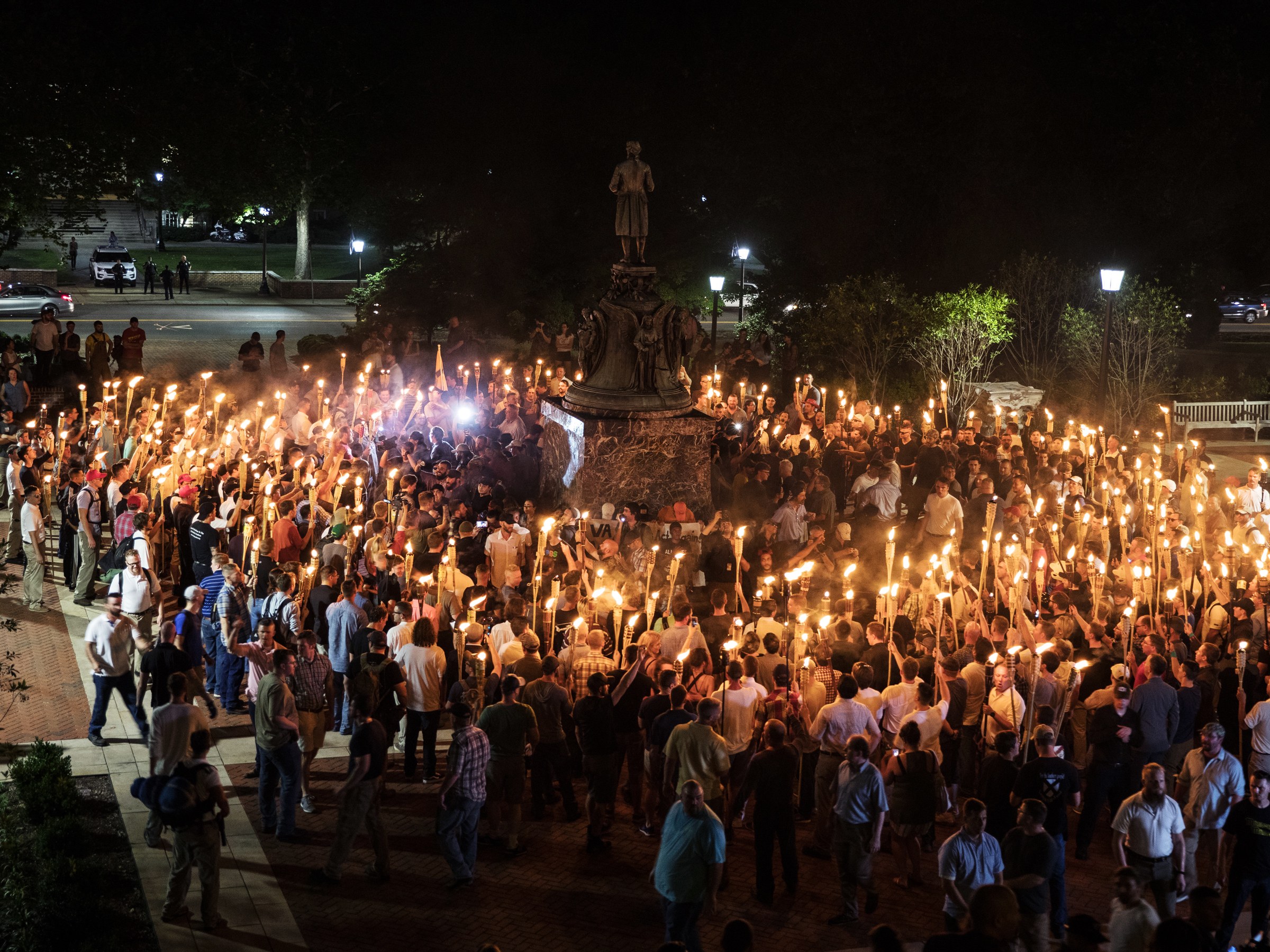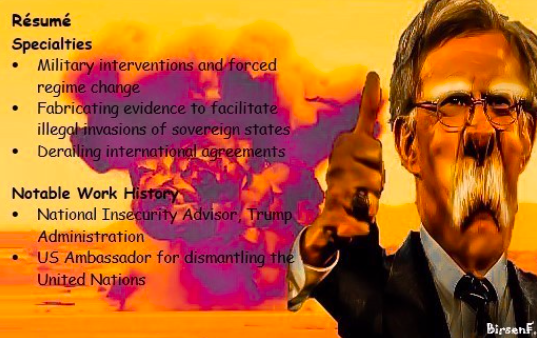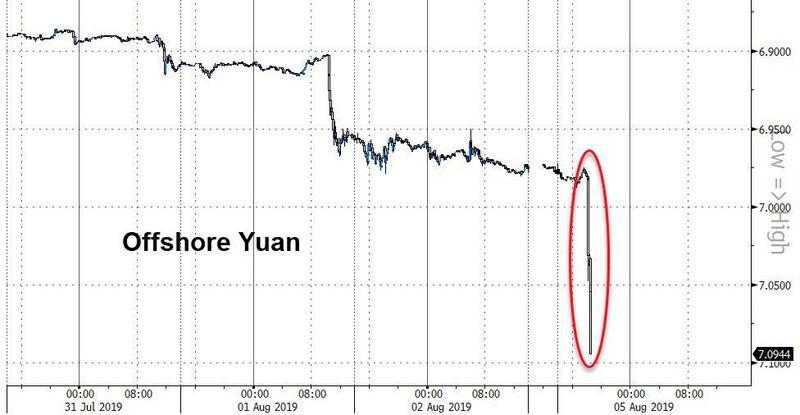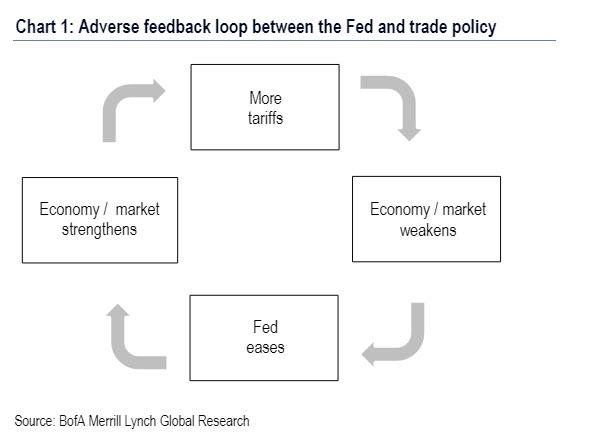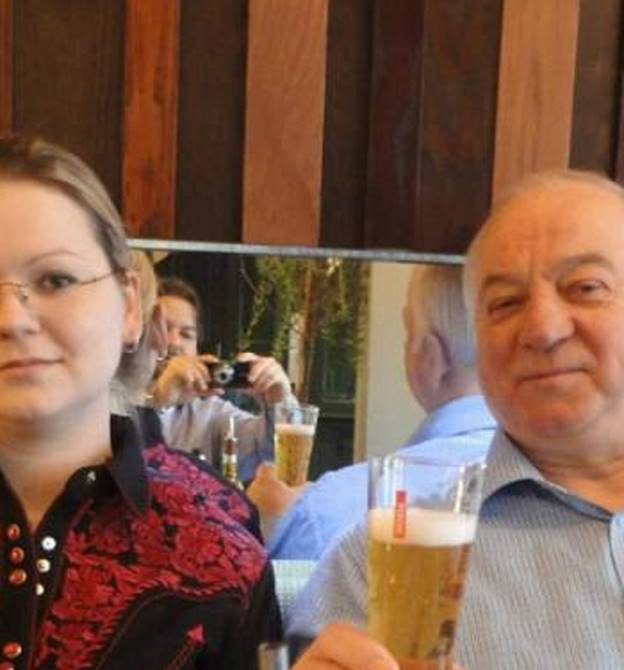“The whole aim of practical politics is to keep the populace alarmed (and hence clamorous to be led to safety) by an endless series of hobgoblins, most of them imaginary.”—H.L. Mencken
We’ve been down this road many times before.
If the government is consistent about any one thing, it is this: it has an unnerving tendency to exploit crises and use them as opportunities for power grabs under the guise of national security.
As David C. Unger, a foreign affairs editorial writer for the New York Times, explains,
“Life, liberty, and the pursuit of happiness have given way to permanent crisis management: to policing the planet and fighting preventative wars of ideological containment, usually on terrain chosen by, and favorable to, our enemies. Limited government and constitutional accountability have been shouldered aside by the kind of imperial presidency our constitutional system was explicitly designed to prevent.”
Cue the Emergency State, the government’s Machiavellian version of crisis management that justifies all manner of government tyranny in the so-called name of national security.
Terrorist attacks, mass shootings, “unforeseen economic collapse, loss of functioning political and legal order, purposeful domestic resistance or insurgency, pervasive public health emergencies, and catastrophic natural and human disasters”: the government has been anticipating and preparing for such crises for years now.
It’s all part of the grand plan for total control.
The government’s proposed response to the latest round of mass shootings—red flag gun laws, precrime surveillance, fusion centers, threat assessments, mental health assessments, involuntary confinement—is just more of the same.
These tactics have been employed before, here in the U.S. and elsewhere, by other totalitarian regimes, with devastating results.
It’s a simple enough formula: first, you create fear, then you capitalize on it by seizing power.
For instance, in his remarks on the mass shootings in Texas and Ohio, President Trump promised to give the FBI “whatever they need” to investigate and disrupt hate crimes and domestic terrorism.
Let that sink in a moment.
In a post-9/11 America, Trump’s promise bodes ill for whatever remnants of freedom we have left. With that promise, flippantly delivered without any apparent thought for the Constitution’s prohibitions on such overreach, the president has given the FBI the green light to violate Americans’ civil liberties in every which way.
This is how the Emergency State works, after all.
Although the damage wrought by these power grabs has been most evident in recent presidential administrations—under Trump, Obama, Bush and Clinton—the seeds of this present madness were sown, according to Unger, in 1940, when President Roosevelt, the “founding father of modern extraconstitutional presidential war-making, the military-industrial complex, and covert federal surveillance of lawful domestic political activity,” declared a national emergency.
So what does the government’s carefully calibrated response to this current crisis mean for freedom as we know it? Compliance and control.
For starters, consider Trump’s embrace of red flag gun laws, which allow the police to remove guns from people “suspected” of being threats, will only add to the government’s power.
As The Washington Post reports,
these laws “allow a family member, roommate, beau, law enforcement officer or any type of medical professional to file a petition [with a court] asking that a person’s home be temporarily cleared of firearms. It doesn’t require a mental-health diagnosis or an arrest.”
Be warned: these laws, growing in popularity as a legislative means by which to seize guns from individuals viewed as a danger to themselves or others, are yet another Trojan Horse, a stealth maneuver by the police state to gain greater power over an unsuspecting and largely gullible populace.
Seventeen states, plus the District of Columbia, now have red flag laws on their books. That number is growing.
In the midst of what feels like an epidemic of mass shootings, these gun confiscation laws—extreme risk protection order (ERPO) laws—may appease the fears of those who believe that fewer guns in the hands of the general populace will make our society safer.
Of course, it doesn’t always work that way.
Anything—knives, vehicles, planes, pressure cookers—can become a weapon when wielded with deadly intentions.
With these red flag gun laws, the intention is to disarm individuals who are potential threats.
“We need to stop dangerous people before they act”: that’s the rationale behind the NRA’s support of these red flag laws, and at first glance, it appears to be perfectly reasonable to want to disarm individuals who are clearly suicidal and/or pose an “immediate danger” to themselves or others.
However, consider what happened in Maryland after a police officer attempted to “enforce” the state’s new red flag law, which went into effect in Oct. 2018.
At 5 am on a Monday, two police officers showed up at 61-year-old Gary Willis’ house to serve him with a court order requiring that he surrender his guns. Willis answered the door holding a gun. (In some states, merely answering the door holding a gun is enough to get you killed by police who have a tendency to shoot first and ask questions later.) Willis initially set his gun aside while he spoke with the police. However, when the police attempted to serve him with the gun confiscation order, Willis reportedly became “irate” and picked up his gun again. At that point, a struggle ensued, causing the gun to go off. Although no one was harmed by the struggle, one of the cops shot and killed Willis.
According to the Anne Arundel County police chief, the shooting was a sign that the red flag law is needed. What the police can’t say with any certainty is what they prevented by shooting and killing Willis.
Therein lies the danger of these red flag laws, specifically, and pre-crime laws such as these generally, especially when you put the power to determine who is a potential danger in the hands of government agencies, the courts and the police.
After all, this is the same government that uses the words “anti-government,” “extremist” and “terrorist” interchangeably.
This is the same government that, in 2009, issued a series of Department of Homeland Security reports on Rightwing and Leftwing “Extremism,” which broadly define extremists as individuals, military veterans and groups “that are mainly antigovernment, rejecting federal authority in favor of state or local authority, or rejecting government authority entirely.”
This is the same government that, as first reported by the Wall Street Journal, tracks military veterans returning from Iraq and Afghanistan and characterizes them as extremists and potential domestic terrorist threats because they may be “disgruntled, disillusioned or suffering from the psychological effects of war.”
This is the same government that keeps re-upping the National Defense Authorization Act (NDAA), which allows the military to detain and imprison American citizens with no access to friends, family or the courts if the government believes them to be a threat.
This is the same government that has a growing list—shared with fusion centers and law enforcement agencies—of ideologies, behaviors, affiliations and other characteristics that could flag someone as suspicious and result in their being labeled potential enemies of the state.
For instance, if you believe in and exercise your rights under the Constitution (namely, your right to speak freely, worship freely, associate with like-minded individuals who share your political views, criticize the government, own a weapon, demand a warrant before being questioned or searched, or any other activity viewed as potentially anti-government, racist, bigoted, anarchic or sovereign), you could be at the top of the government’s terrorism watch list.
Moreover, as a New York Times editorial warns, you may be an anti-government extremist (a.k.a. domestic terrorist) in the eyes of the police if you are afraid that the government is plotting to confiscate your firearms, if you believe the economy is about to collapse and the government will soon declare martial law, or if you display an unusual number of political and/or ideological bumper stickers on your car.
According to the FBI’s latest report, you might also be classified as a domestic terrorism threat if you espouse conspiracy theories, especially if you “attempt to explain events or circumstances as the result of a group of actors working in secret to benefit themselves at the expense of others” and are “usually at odds with official or prevailing explanations of events.”
Additionally, according to Michael C. McGarrity, the FBI’s assistant director of the counterterrorism division, the bureau now “classifies domestic terrorism threats into four main categories: racially motivated violent extremism, anti-government/anti-authority extremism, animal rights/environmental extremism, and abortion extremism.”
In other words, if you dare to subscribe to any views that are contrary to the government’s, you may well be suspected of being a domestic terrorist and treated accordingly.
Where many Americans go wrong is in assuming that you have to be doing something illegal or challenging the government’s authority in order to be flagged as a suspicious character, labeled an enemy of the state and locked up like a dangerous criminal.
That is not the case.
All you really need to do is question government authority.
With the help of artificial intelligence, a growing arsenal of high-tech software, hardware and techniques, government propaganda urging Americans to turn into spies and snitches, as well as social media and behavior sensing software, government agents are spinning a sticky spider-web of threat assessments, behavioral sensing warnings, flagged “words,” and “suspicious” activity reports aimed at snaring potentialenemies of the state.
It’s the American police state’s take on the dystopian terrors foreshadowed by George Orwell, Aldous Huxley and Phillip K. Dick all rolled up into one oppressive pre-crime and pre-thought crime package.
What’s more, the technocrats who run the surveillance state don’t even have to break a sweat while monitoring what you say, what you read, what you write, where you go, how much you spend, whom you support, and with whom you communicate. Computers guided by artificial intelligence now do the tedious work of trolling social media, the internet, text messages and phone calls for potentially anti-government remarks—all of which is carefully recorded, documented, and stored to be used against you someday at a time and place of the government’s choosing.
This is the world that science fiction author Philip K. Dick envisioned for Minority Report in which the government is all-seeing, all-knowing and all-powerful, and if you dare to step out of line, dark-clad police SWAT teams will crack a few skulls in order to bring the populace under control.
In Dick’s dystopian police state, the police combine widespread surveillance, behavior prediction technologies, data mining and precognitive technology to capture would-be criminals before they can do any damage: precrime.
In the film Minority Report, the technology that John Anderton, Chief of the Department of Pre-Crime in Washington, DC, relies on for his predictive policing proves to be fallible, identifying him as the next would-be criminal and targeting him for preemptive measures. Consequently, Anderton finds himself not only attempting to prove his innocence but forced to take drastic measures in order to avoid capture in a surveillance state that uses biometric data and sophisticated computer networks to track its citizens.
With every passing day, the American police state moves that much closer to mirroring the fictional pre-crime prevention world of Minority Report.
For instance, police in major American cities have been using predictive policing technology that allows them to identify individuals—or groups of individuals—most likely to commit a crime in a given community. Those individuals are then put on notice that their movements and activities will be closely monitored and any criminal activity (by them or their associates) will result in harsh penalties.
In other words, the burden of proof is reversed: you are guilty before you are given any chance to prove you are innocent.
Dig beneath the surface of this kind of surveillance/police state, however, and you will find that the real purpose of pre-crime is not safety but control.
Red flag gun laws merely push us that much closer towards a suspect society where everyone is potentially guilty of some crime or another and must be preemptively rendered harmless.
Again, where many Americans go wrong is in naively assuming that you have to be doing something illegal or harmful in order to be flagged and targeted for some form of intervention or detention.
In fact, U.S. police agencies have been working to identify and manage potential extremist “threats,” violent or otherwise, before they can become actual threats for some time now.
In much the same way that the USA Patriot Act was used as a front to advance the surveillance state, allowing the government to establish a far-reaching domestic spying program that turned every American citizen into a criminal suspect, the government’s anti-extremism program renders otherwise lawful, nonviolent activities as potentially extremist.
In fact, all you need to do these days to end up on a government watch list or be subjected to heightened scrutiny is use certain trigger words (like cloud, pork and pirates), surf the internet, communicate using a cell phone, limp or stutter, drive a car, stay at a hotel, attend a political rally, express yourself on social media, appear mentally ill, serve in the military, disagree with a law enforcement official, call in sick to work, purchase materials at a hardware store, take flying or boating lessons, appear suspicious, appear confused or nervous, fidget or whistle or smell bad, be seen in public waving a toy gun or anything remotely resembling a gun (such as a water nozzle or a remote control or a walking cane), stare at a police officer, question government authority, or appear to be pro-gun or pro-freedom.
Be warned: once you get on such a government watch list—whether it’s a terrorist watch list, a mental health watch list, a dissident watch list, or a red flag gun watch list—there’s no clear-cut way to get off, whether or not you should actually be on there.
You will be tracked wherever you go.
You will be flagged as a potential threat and dealt with accordingly.
This is pre-crime on an ideological scale and it’s been a long time coming.
The government has been building its pre-crime, surveillance network in concert with fusion centers (of which there are 78 nationwide, with partners in the corporate sector and globally), data collection agencies, behavioral scientists, corporations, social media, and community organizers and by relying on cutting-edge technology for surveillance, facial recognition, predictive policing, biometrics, and behavioral epigenetics (in which life experiences alter one’s genetic makeup).
If you’re not scared yet, you should be.
Connect the dots.
Start with the powers amassed by the government under the USA Patriot Act, note the government’s ever-broadening definition of what it considers to be an “extremist,” then add in the government’s detention powers under NDAA, the National Security Agency’s far-reaching surveillance networks, and fusion centers that collect and share surveillance data between local, state and federal police agencies.
To that, add tens of thousands of armed, surveillance drones and balloons that are beginning to blanket American skies, facial recognition technology that will identify and track you wherever you go and whatever you do. And then to complete the picture, toss in the real-time crime centers being deployed in cities across the country, which will be attempting to “predict” crimes and identify so-called criminals before they happen based on widespread surveillance, complex mathematical algorithms and prognostication programs.
Hopefully you’re starting to understand how easy we’ve made it for the government to identify, label, target, defuse and detain anyone it views as a potential threat for a variety of reasons that run the gamut from mental illness to having a military background to challenging its authority to just being on the government’s list of persona non grata.
There’s always a price to pay for standing up to the powers-that-be.
Yet as I make clear in my book Battlefield America: The War on the American People, you don’t even have to be a dissident to get flagged by the government for surveillance, censorship and detention.
All you really need to be is a citizen of the American police state.
*
Note to readers: please click the share buttons above or below. Forward this article to your email lists. Crosspost on your blog site, internet forums. etc.
This article was originally published on The Rutherford Institute.
Constitutional attorney and author John W. Whitehead is founder and president of The Rutherford Institute. His new book Battlefield America: The War on the American People is available at www.amazon.com. Whitehead can be contacted at [email protected].

